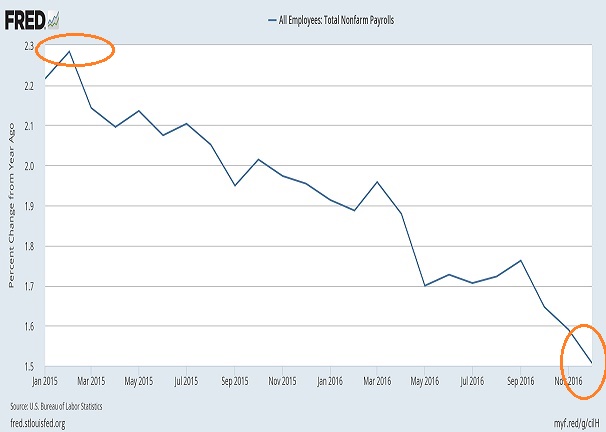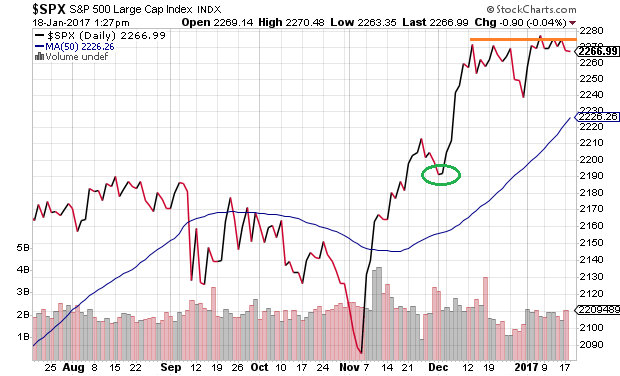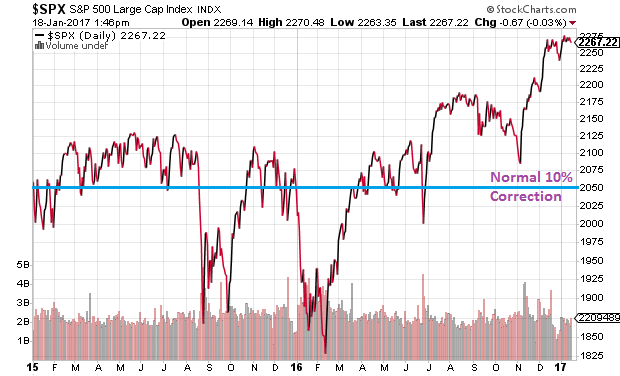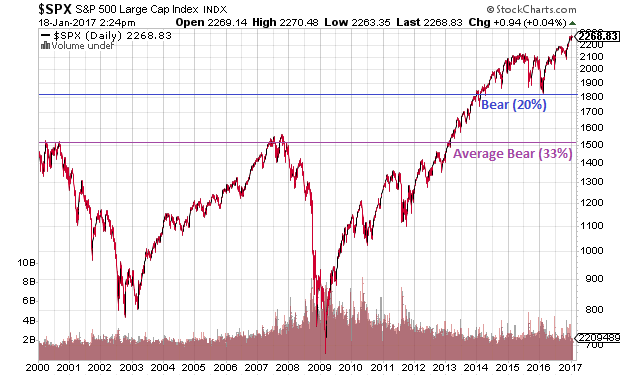Inflation-adjusted credit-card purchasing recently eclipsed inflation-adjusted wage growth by 2.8%. According to Danielle DiMartino Booth, that is the widest margin in the seven years and eight months of economic recovery.
Some explain that the reliance on credit for consumption is a sign of confidence – an indication of a healthy desire to spend. Me? I believe middle-class Americans are struggling to get by.
Consider the popular notion that America is near “full employment” and that wage growth is picking up. Unfortunately for the financial media elite, year-over-year government statistics suggest that inflation-adjusted wages are still rather stagnant.

Equally challenging, job growth continues to wane.

Meanwhile, growth in Gross Domestic Product (GDP) per Capita (per person) – a barometer of the comfort level of a country’s citizens – has not recovered its pre-Great-Recession levels. It has not recovered levels reached during the 1991-2000 economic expansion either.

Jobs, wages, GDP per capita, GDP – all of it may be growing. Yet growth is either slowing or stagnating. The idea that these trends will reverse themselves on the promise of tax cuts, deregulation and trade renegotiation is hazy at best.
Theoretically, of course, businesses cheer the possibility of lower taxes and fewer regulations. I cheer them as well. On the flip side, the U.S. stock market may have placed the proverbial cart before the pony. Congress is more likely to pass a more modest change to current tax policy than it is to come up with a sweeping overhaul. The same goes for regulatory rollbacks. And modifications to trade deals? There are likely to be winners and losers across the spectrum of S&P 500 corporations.
Not surprisingly, then, the Trump rally that began shortly after the presidential election has been hitting resistance. The S&P 500 has actually churned sideways since the 2nd week of December.

Less appreciated? A garden-variety correction (10%) would evaporate the price appreciation of the S&P 500 going back to December 31, 2014.

Granted, a typical market pullback of 10% may present a buy-the-dip opportunity. On the flip side, U.S. stocks are exorbitantly priced and the current bull market (7 years, 10 months) is the 3rd longest in history.
While bull markets may not die of old age themselves, it is worth noting that the longest bull market (10/90-3/00) as well as the 2nd longest bull market (8/21-9/29) culminated in mind-blowing bears of -50% and -86% respectively. That’s because the extreme valuations reached at the tail end of those bull markets were not sustainable. Are they any more sustainable today?

With the reality that stocks are significantly overvalued in one of the longest bull markets on record, with the knowledge that neither the executive branch nor the legislative branch nor the Federal Reserve can outlaw a bearish stock decline, it is worth contemplating what the “next one” may look like. The demarcation line of -20% would send the S&P 500 back to December of 2013. An average bear market of -33%? That would take the market back to October of 2000. Ironically enough, an average bear would also take stocks back to the year 2000, erasing nearly all price appreciation for the index in the 21st century.

How might you prepare? Long-time readers know that my prescription involves lowering exposure to risk assets, not eliminating exposure. A moderate growth-and-income investor might downshift from 65%-70% wide-ranging growth (e.g., large-cap, small-cap, foreign, etc.)/30%-35% wide-ranging income (e.g., investment grade, high yield, foreign, etc.) to 50% highest quality stock, 20%-25% investment grade bond and the rest in cash equivalents. The cash can be redeployed to buy equities and bonds at bargains.
